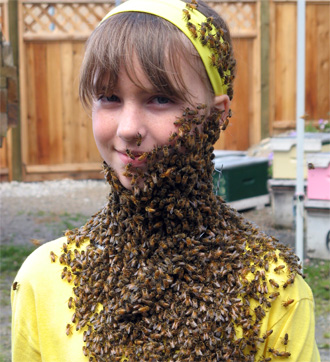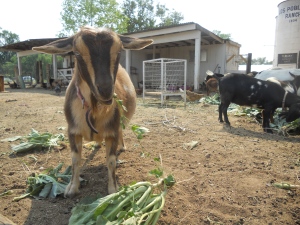Category Archives: Future of food
“What is a weed? A plant whose virtues have never been discovered.”
~Ralph Waldo Emerson


Or, even better yet… EAT THEM!
That’s right, I said it.
Weeds.
If you can’t beat ’em, EAT ’em.
Most weeds are edible at some point in their growth. Even tumbleweeds here in the Southwest!
1 Comment | posted in Activism, Cooking, Earth, Enivironmentalism, Evils of Monsanto, Farms, Fight the corporate takeover, Food, Future of food, Garden, Health, Honeybees, Photos, Policies, Quotes, Say no to GMO, Seeds, Things To Ponder
1 Comment | posted in Activism, Canning and preserving, Cooking, Earth, Enivironmentalism, Evils of Monsanto, Farms, Fight the corporate takeover, Food, Future of food, Garden, Health, Homemade, Honeybees, Policies, Say no to GMO, Stats, Water
2 Comments | posted in Activism, Canning and preserving, Cooking, Earth, Enivironmentalism, Farms, Fight the corporate takeover, Food, Future of food, Garden, Health, Homemade, Honeybees, Quotes, Recipes, Say no to GMO, Seeds

Quote of the Week (From Organic Bytes)
Monsanto’s Corn Is Toppling Over
“As the summer growing season draws to a close, 2011 is emerging as the year of the superinsect – the year pests officially developed resistance to Monsanto’s genetically engineered (ostensibly) bug-killing corn.
“In late July scientists in Iowa documented the existence of corn rootworms (a ravenous pest that attacks the roots of corn plants) that can happily devour corn plants that were genetically tweaked specifically to kill them. Monsanto’s corn, engineered to express a toxic gene from a bacterial insecticide called Bt, now accounts for 65 percent of the corn planted in the US.
“The superinsect scourge has also arisen in Illinois and Minnesota.
“‘Monsanto’s insect-killing corn is toppling over in northwestern Illinois fields, a sign that rootworms outside of Iowa may have developed resistance to the genetically modified crop,’ reports Bloomberg. In southern Minnesota, adds Minnesota Public Radio, an entomologist has found corn rootworms thriving, Bt corn plants drooping, in fields.
“[A] 2008 study, conducted by University of Missouri researchers and published by the Proceedings of the National Academy of Sciences found that within three generations, rootworms munching Monsanto’s Bt corn survived at the same rate as rootworms munching pesticide-free corn-meaning that complete resistance had been achieved. Takeaway message: rootworms are capable of evolving resistance to Monsanto’s corn in ‘rapid’ fashion.”
– “Monsanto Denies Superinsect Science,” by Tom Philpott, Mother Jones, September 8, 2011
Ummm, seriously. How do we continue to uphold a system that supports this sort of agricultural practces!!!???
“Monsanto’s insect-killing corn”
Sounds like something we should run away from screaming, not support through practice and policy!!
2 Comments | posted in Activism, Evils of Monsanto, Farms, Fight the corporate takeover, Food, Future of food, Health, News, Policies, Quotes, Rants, Say no to GMO, Seeds, Things To Ponder
A zero waste grocery store.
Lovin this model! Package free! What a fantastic store and why in the world is this the first of its kind in the U.S.??? Lets get this idea growing and catching like wildfire!
I am quite suprised in fact that this doesn’t exist in Portland!
All of you in TX better support this store!!
Leave a comment | posted in Activism, Canning and preserving, Cooking, Enivironmentalism, Fight the corporate takeover, Food, Future of food, News, Policies, Things To Ponder
I just realized that I have reached the 100 posts mark!
I cannot believe I have written that much in the months since I began this blog!
Thanks to all of you that keep on reading!

I also wanted to share a couple of exciting links regarding my field school:
I will be showing my own 5 minute media piece on Mutual Aid Societies with some of my peers. I will share it on here eventually no doubt, as well. Speaking of… I better get back to work! 🙂
1 Comment | posted in Activism, Earth, Enivironmentalism, Farms, Fight the corporate takeover, Food, Future of food, Garden, Health, News, Out and about, Policies, Schoolastic, Seeds, Stats, Things To Ponder, Travels, Writings
I have a few books that I wanted to pass on to all of you with high recommendations!
I was assigned several books to read for my Foodshed Field School Course as follows:
- Imhoff, D. (ed.). 2010. The CAFO Reader. Watershed Media.
- Franceschini, A. and D. Tucker. 2010. Farm Together Now: A Portrait of people, places, and ideas for a new food movement. Chronicle Books, San Francisco.
- Rodríguez, Sylvia. 2006. Acequia: Watersharing, Sanctity, and Place. School for Advanced Research, Santa Fe.
- World Economic Forum. 2011. Water Security: The Water-Food-Energy-Climate Nexus Island Press. ISBN-10: 1597267368.
Now, a quick check on that list… The number 4 book I would NOT recommend. I read a good portion of it and it raised the hair on my neck a few times. Part of the contributors for the text are CEOs of CocaCola and Pepsi. Obvious hidden agenda with companies like that telling others how they should conserve water!! It takes over 16 gallons of water to make just one 12oz can of soda… Think about it.
The other books are good reads so far.
It was hard in the last month to actually get any reading in during the field school but I am catching up now. I am nearly done with Farm Together Now and love love love this book. The CAFO book is graphic and harsh but that never stops me from reading on. The truth hurts at times 😉 The Acequia text I have actually used as a reference before for other school works I have written.
I would recommend book number2 the most.
The book that I really want all of you to read besides Farm Together Now is:

The Dirty Life: On Farming, Food, and Love.
I could not put this book down. It is so open, inspiring, and real. I always thought of myself as settling down later in life to run some sort of farm but this book has made me think why wait? It really was almost more informative that all of the texts that I was assigned during the field school. I referenced it so many times in discussions en route to new locations on our NM foodshed tour that my peers dubbed it “my bible”. I love this model though. How more connected to your food, land, love, and community can you get than this??
Read it and get inspired!
For more about the book/farm/author here are some links:
Leave a comment | posted in Activism, Canning and preserving, Cooking, Earth, Enivironmentalism, Evils of Monsanto, Farms, Fight the corporate takeover, Food, Future of food, Garden, Goats, Health, Homemade, Honeybees, News, Say no to GMO, Schoolastic, Seeds, Things To Ponder, Travels
Wow!! What a fly-by-the-seat-of-your-pants month June was… Can I breath yet??
Hence, I have not shared this year’s garden’s progress for a bit.
Well hold onto your pantalones because it is growing fast and I am ready to share some loveliness!
 E above, watering the Posole corn.
E above, watering the Posole corn.
First and foremost, I must give credit where credit is due and if it wasn’t for a few of my beautiful friend’s my garden would not be the lively, thriving place that it is right now. Thank you to everyone, especially E, for helping me keep it watered through my absentee month and our no-rain-for-140-days summer! Where in the Sam-hell is our monsoon season anyhow??
The following photos were taken last weekend when I was home for two days and was able to get in some work in the garden as well as some harvesting. I gave away a bit of it and ate some delisciousness myself. I tell you what, there is nothing like the taste of fingerling potatoes and green onions fresh from the soil and straight from a wash into your pan. Those damn potatoes were so buttery tasting that I could have cried! I cannot wait for the next harvest for those.
I will be making a kale-beet salad tonight from my garden for my field school potluck wrap-up. That shall likely be equally divine tasting. I really cannot stress enough the richness of flavor that comes in food that you grow yourself.
Okay, I will stop my yapping and let you have a look-see…
 The medium bed.
The medium bed.
 Large bed.
Large bed.
 Flowers, tomatoes, green onions, and kale.
Flowers, tomatoes, green onions, and kale.
 A yet green Roma tomato.
A yet green Roma tomato.
 Row of beans sprouting well!
Row of beans sprouting well!
 Giant kale loveliness!
Giant kale loveliness!
 Posole corn.
Posole corn.
 Flowers for the kitchen window view.
Flowers for the kitchen window view.
 Flowers in the small bed.
Flowers in the small bed.
 Onions.
Onions.
 Drying Dill.
Drying Dill.
 Box of my harvest!
Box of my harvest!
 Three kinds of lettuce, various greens, green onions, two kinds of basil, kale, dill, chamomile, baby beets, and fingerling potatoes.
Three kinds of lettuce, various greens, green onions, two kinds of basil, kale, dill, chamomile, baby beets, and fingerling potatoes.
Eat your heart out!
Whats in your front yard/back yard/windowsill garden or farm? What have you harvested lately? Whats doing well and what is not?
2 Comments | posted in Activism, Earth, Enivironmentalism, Food, Future of food, Garden, Health, Honeybees, Photos, Say no to GMO, Seeds
This Sunday ~ June 26th!
That is tomorrow people!!!
What will you be doing to celebrate these little creatures that give us so much food and beauty that would never be a possibility without them??

Might I make a few suggestions?
You could…
-
plant some flowers/herbs in your yard or an outside pot or a window garden.
-
make a bee watering station with a shallow container filled with rocks and water.
-
start a backyard hive.
-
help spread awareness of their endangerment from CCD.
-
write to your local politician about the importance of stopping GMO foods.
-
join Millions Against Monsanto.
-
take your children to a local farm that raises bees to educate the next generation on their importance and harmlessness.
-
join your local beekeeping coalition.
-
volunteer time with a local beekeeper.
-
host your own celebration for friends, family and neighbors.
-
buy a hive for a family to make a living from in another country.
-
You could even dress up!

There are so many ways in which to celebrate these lovely creatures!
Leave a comment | posted in Activism, Cooking, Earth, Enivironmentalism, Evils of Monsanto, Farms, Fight the corporate takeover, Food, Future of food, Garden, Health, Honeybees, Life, News, Policies, Say no to GMO, Seeds, Things To Ponder
3 Comments | posted in Activism, Earth, Enivironmentalism, Farms, Fight the corporate takeover, Food, Future of food, Garden, Goats, Health, Honeybees, Life, Out and about, Photos, Say no to GMO, Schoolastic, Seeds, Things To Ponder, Travels, Water







































